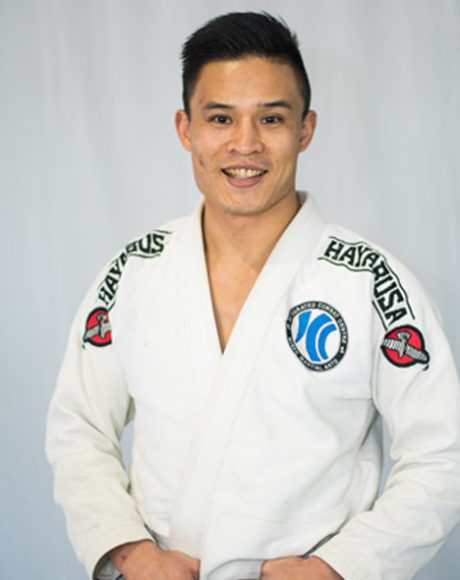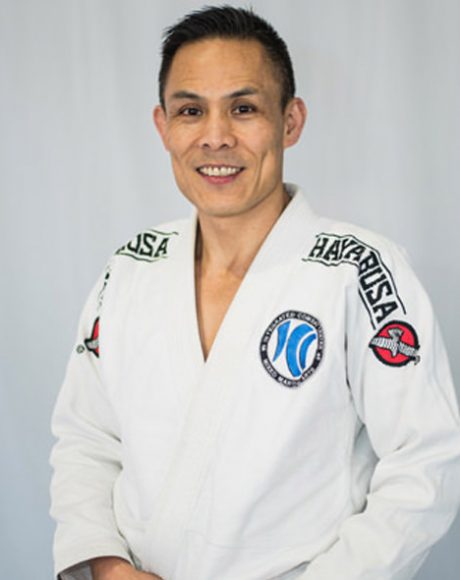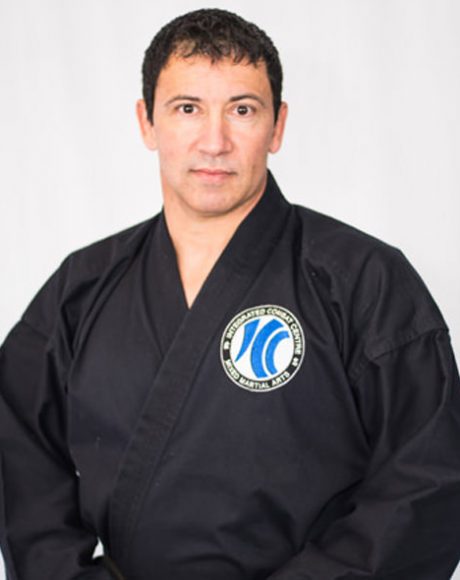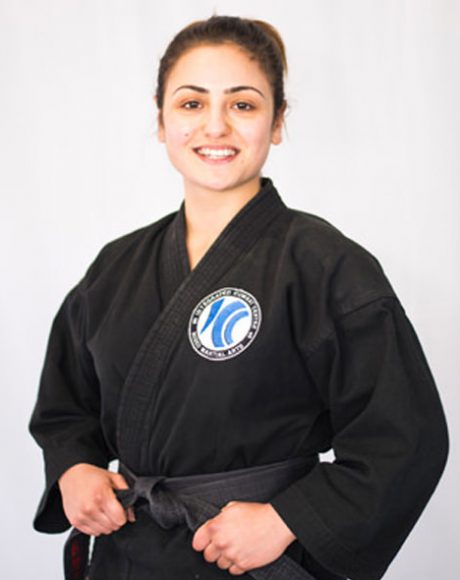The link between Conde Koma, Mixed Martial Arts (MMA) and ICC
In the beginning, before BJ Penn shook the MMA world with his rubber guard, before Royce Gracie slew giants in the UFC, there was Brazilian Jiu Jitsu.
Where did this art come from? How did something so Japanese end up on the streets of Rio in the hands of Brazilian-born Helio Gracie? How did this art spread from South America, up through Mexico, across the Caribbean, all the way to the far shores of Australia—to schools like the Integrated Combat Centre in Sydney?
The answer is as complex and interesting as the martial art itself, and it starts with a man who had no name.
His parents called him Mitsuyo Maeda, but those who saw the contents of his heart and the strength of his will—those who were witness to his years-long in-ring onslaught—didn’t know who he was. They only knew what he was.
He was Count Koma. The Count of Combat. The true father of Brazilian Jiu Jitsu.
First things first—let’s clear something up. Brazilian Jiu Jitsu is based off Japanese Jiu Jitsu, but in the same way you are based on your grandmother. They’re related, but there are several strands of DNA from different arts and practitioners that make them discernably different. And what’s more, Mitsuyo Maeda never actually studied traditional Jiu Jitsu; he studied Kodokahn Judo under Jigoro Kano—the founder of Judo.
The history of Judo is a subject that deserves close attention, but for the purpose of this article, let’s just say this—Jiu Jitsu was meant for unarmed combatants in armor. Judo was a special version of Jiu Jitsu that was designed for competitive sport instead of combat. Judo, as opposed to Jiu Jitsu, ensured the safety of students and banned certain techniques
But Maeda learned these forbidden techniques. And though he didn’t practice them early in his career, they would later lead him to split from the Kodokahn way.
To spread the gospel of Judo, Kano sent his most ardent supporters out into the world to open schools and make their mark. Maeda was among these disciples. Like Buddhist monks, this first wave of the Judo diaspora had many strict rules about behavior for a Judoka in the world, chief among these was this—no fighting for prize money. This rule might never have been a problem for Maeda were it not for the difficulties he faced teaching Judo.
Maeda, with limited English, had been sent to America to teach about Kano’s new martial art, but found the Americans unwilling students—either due to prejudice against Easterners or difficulties with the language barrier. That lead to dwindling school enrollments and declining funds.
Cash was running out. Maeda was struggling to make ends meet. After a time, he was approached by a Japanese businessman who recognized his athletic ability and offered him a large sum of money if he would take a fight.
The decisions was tough, but you can’t spread the gospel of Judo if you’ve starved to death in the streets, so Maeda took the offer.
However, not wanting to be excommunicated for breaking his teacher’s number-one rule (don’t use Judo to fight for money!), Maeda decided to lie and tell folks he was using Jiu Jitsu to fight, not Judo.
Conflict averted.
Maeda earned his money, and his inaugural fight was the first encounter he had with western wrestling techniques, and it totally changed his mindset. Maeda realized that teaching was not the only way to spread the gospel of Judo. There was also fighting. Breaking Kano’s top rule, taking on more prize fights and traveling southward throughout the Americas, Maeda took his brutal skills to Spanish-speaking countries such as Mexico. It was here, fighting with “Jiu Jitsu” (secretly Judo) as an unknown to preserve his identity—bloodying all comers in front of smoky crowds made up of roaring Mexicans—he earned his title.
The gawking onlookers didn’t know who he was or what he was made out of. They knew only that he was unbeatable. So they called him Conde Koma—Count Combat.
It was a name he lived by. Maeda’s philosophy was simple–if you were human, he would find a way to destroy you.
He capitalized on his fame. During his time in Mexico, Maeda would offer a prize to anyone who could throw him (for a small entrance fee, of course). If you did manage to throw the 70 kg Maeda, there was a prize of 500 pesos waiting for you—a small fortune for 1908.
His invitation brought hulking giants and tough men from miles around, and they would try their luck and skills against the Count of Combat only to find themselves a little poorer than when they started. But they left the ring with stories that would delight friends and family for years to come—enthralling tales about the time they battled a legend inside the ring.
When he moved onto Cuba, Maeda challenged the greatest Cuban boxers and handily defeated them in contests, but without a gi to grab hold of, he would have a harder time initiating the trademark throws of Judo.
Maeda needed an edge. And then he remembered the forbidden techniques that Kano had banned in the name of safety and good competition. Techniques like knee bars, and techniques taught by catch-as-catch-can wrestlers. These skills were often not reliant on a particular type of clothing, as wrestlers of this time would travel around from place to place taking on all comers and fighting in all situations.
He embraced them, and his popularity soared.
That’s when Maeda began to lose favor in the Kodokahn (despite being awarded higher and higher ranks for his skill and involvement with the Judo world). Many felt his shady techniques and his habit of calling out famous fighters (such as Jack Johnson—the first black heavy weight champion of boxing) was unbecoming to the gentlemanly ways of Judo and Kano.
Does his behavior sound familiar to you?
Conor McGregor took a page from the Count of Combat when called out Floyd Mayweather. Funny how times, and perceptions, change.
The difference with Maeda was that fighters, like Jack Johnson, understood what they had to lose by competing in a no rules contest against Count Koma.
Everything. With almost no upside.
With little return involved in taking up the challenges posed by the Count, people like Frank Gotch never reciprocated. This made Maeda, by default, one of the Four Kings of Cuban combat, because no North American Champion wanted to fight him
Eventually, he moved onto Brazil to continue his martial conquest. It was here he met the Gracie family, and it was here his no-mercy style of Judo was named—it was called Brazilian Jiu Jitsu.
Maeda took on several exhibitions in Brazil and fought people such as Nagib Assef, an Australian Greco-Roman wrestling champion. These fights quickly spread the legend of the Count of Combat across the globe, and Maeda followed his notoriety wherever it would take him. He came and left Brazil several more times before finally settling down there to open a Judo school—the Judo that Kano had wanted him to teach years before.
But Judo wasn’t what had made him famous. Gastao Gracie, one of Maeda’s business partners, began to ask if Maeda would teach his sons the art of the Jiu Jitsu—the style that had led him across the world as Count Koma. Maeda was reluctant at first, but eventually relented. Those first classes with the Gracie kids stoked a fire in martial arts; a fire that, like the legend of Maeda himself, would spread around the world.
Helio, the younger of the Gracie brothers, would adopt Maeda’s tactic of take-on-all-comers and, like Maeda, would spread the legend of Brazilian Jiu Jitsu throughout the country and eventually the world.
Now Brazilian Jiu Jitsu is witnessed around the world, from America, to Europe, to the shores of Sydney. While most people credit Helio Gracie with the art of BJJ, none of it would have been possible without the tutelage of the Count of Combat, and his iron perversions to Kano’s gentlemanly Judo.
Give our BJJ program a go and experience the improvements to all of these fields. It is considered to be an excellent first style where the skills are easily transferable.





